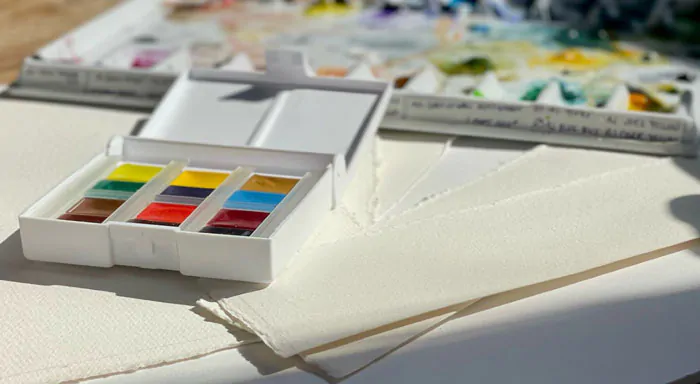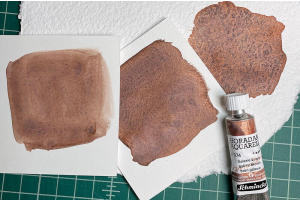We use cookies to make your experience better. To comply with the new e-Privacy directive, we need to ask for your consent to set the cookies. Learn more.
Cheap Joe’s Art Stuff Art Blog
Tips, Tricks, Thoughts, and inspiration from across the art spectrum.
The Truth About Watercolor Tubes vs. Pans


It is not uncommon when new artists are budding and trying to learn all they can that they turn to friends and classmates for advice on all things related to art and art supplies. What is the best watercolor paper to use? What is the highest quality artist paint brushes should you choose? Am I ready for an artist easel yet? Sadly, however, some information that is afloat amongst many students in just rumor and supposition can prove to be more of a detriment than of help. Even, on occasion some art professionals find themselves misunderstanding their own artist materials. Especially in the case of many artists’ understandings regarding watercolor pans.
How Watercolors Are Made
One of the first things that beginners learn in their art lessons is that watercolor is essentially a two-part suspension of pigment and a binder. The binder that is most often used for artist watercolors is gum arabic. These two basic parts are combined in varying ratios to form watercolor paints as we know them. The higher the concentration of pigment in those paints, the more potent the color and coverage will be out of the tube and in your watercolor painting. After the pigments are milled together with the binder, they are usually placed into a tube. Watercolors in a tube are the format with which most artists are familiar. But watercolors can be accessible in other formats as well that are just as high quality and performance as that of a tube, whether it is a watercolor pencil, watercolor crayons, liquid watercolors, or even that of watercolor pans.
Many artists who are new to watercolor may have only a passing familiarity with watercolor in this other format, watercolor pans. Far fewer artists are aware of how they are made, which leads to unhelpful misinformation that makes the process of watercolor painting even more confusing. So many new artists hear a misguided rumor about watercolor pans being of a lower quality compared to watercolor paints in a tube. Artists are led to believe that pans have lower amounts of pigment which would then result in less concentrated color and brilliance. This could not be more false. In fact, watercolor pans are made from the exact watercolor that is milled and put into tubes. Watercolor pans are actually tube paint that is manufactured by allowing the paint to air dry and then cut into small cubes. Therefore, any watercolor pan is the exact same quality as it would be if an artist put their tube watercolors in their watercolor palette to dry. Only a spritz of water is needed to activate watercolors in a palette or a pan.
Armed with this information, it can make artists wiser shoppers when choosing just the right art supplies to suit their preference and situation. Knowing exactly what your art materials are made from and how they came to be can make all the difference in an artists’ journey as well as their enjoyment of the process. Information is power in all things, even in matters of a tiny watercolor pan.







